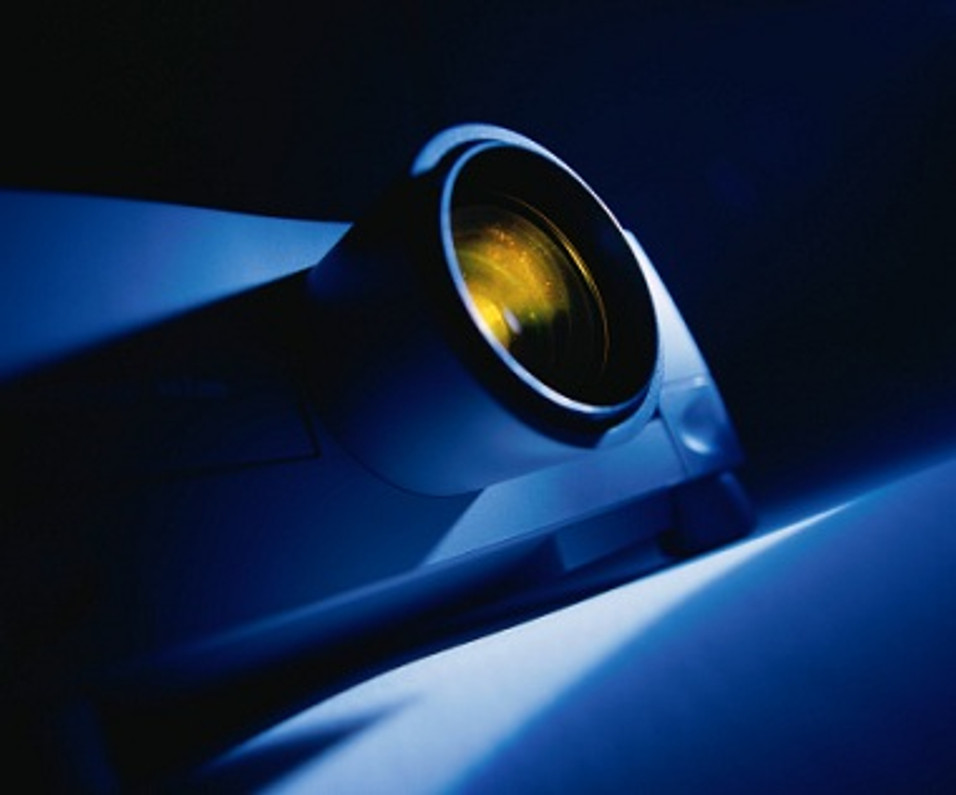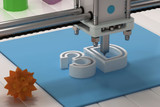LCD, DLP And LED Projectors — The Differences
Sometimes trying to figure out data projector technology is like dealing with the government, with all the TLAs (three-letter acronyms). LED, LCD, DLP…what do they all mean?
First of all, there’s two basic components in a projector: lighting, and the imaging/display device technology, says Joe Gillio, director of product marketing for Casio America Inc., in Dover, N.J.
Traditionally, there’s been one type of lighting source — the lamp — though the technology behind the lamp has improved over time. The move to metal halide bulbs, and then to the ultra-high pressure mercury lamps used today, has both reduced the cost of the bulbs, and improved their lifetimes. The result is that projectors using bulb technology are more reliable today than they ever have been before, says Felix Pimentel, product manager for Optoma Technology Inc., in Fremont, Calif.
But in the past few years, the industry has developed projectors using a different lighting source, the light-emitting diode (LED). LED-based projectors offer a number of advantages over traditional lamp-based systems.
First, they tend to have a longer lifespan — up to 20,000 hours, compared with the mercury vapor lamp, says Gillio. This makes the projectors more reliable, because they fail less often, and don’t “burn out” like lamps do. In addition, the mercury in LCD projectors is environmentally hazardous, he says, which is not a factor with LEDs.
While the LED light sources are more expensive, they save money in the long run because they fail less often, Gillio says. Because lamps aren’t typically the kind you can go down to the corner and buy, a salesman on the road or a teacher in the classroom with a blown bulb faces the cost of the downtime until the bulb can be replaced, he says.
Another advantage of the LED lighting systems is that they provide a larger number of colors, and more saturated colors, on the screen, meaning the LED system “looks” brighter, Pimentel says. LED projectors also tend to have fewer parts because the LED performs some of the functions that require additional parts in lamp-based projectors. This means LED-based projectors can be smaller and lighter than lamp-based ones, he says. They also use as little as a third of the energy of lamp-based projectors, which means that vendors have been able to develop battery- and solar-powered projectors for use in remote areas, he adds.
On the other hand, both vendors admit that LED-based projectors currently can’t be as bright as lamp-based ones. This can be a problem in business situations because in rooms that aren’t dark enough, it can be difficult to see the imagery, because it requires 2500 to 3000 lumens to get a bright image on the screen and current LEDs max out at far less than that, Gillio says. “LED projectors are great, they’re brighter than they have ever been,” but they’re still no match for the brightness that can be achieved with lamp-based technologies, Pimentel says.
For the imaging technology component, there are basically two choices: liquid crystal display (LCD) and digital light processing (DLP).
DLP is a solid-state technology that uses a single device to create an image, which means using it can produce smaller, thinner projectors than with LCD, which requires three devices, Gillio says.
LCD projectors also have one big problem: Dust, says Pimentel. “Dust is its biggest enemy,” he says. Filters need to be cleaned on a regular basis, or dust shows up on the screen, and the image starts looking degraded after three and half years, he says.
So which technologies are the most popular?
In terms of lighting technology, “Traditional lamp-based projectors are still our bread and butter, Pimentel says, amounting to about 75 percent of Optoma’s sales. “But LED projectors are making tremendous improvements.”

— This graphic shows the Laser & LED light source in Casio’s Green Slim and Signature models of hybrid light source projectors. Note that it uses only a red LED.
This is confirmed by Pacific Media Associates, a San Francisco-based market research firm following the projector market. “The popularity of Laser/LED Hybrid light engines for projectors continues to grow, because of their ‘green’ factor,” says Linda Norton, vice president of Business Development. “There are no lamps to replace, making them good for the environment, as well as making their total cost of ownership lower with no lamp replacement costs. From 2010 to 2011, unit shipments of Laser/LED hybrid units grew by about 15 percent. Similar growth is expected this year.”
For imaging, the two technologies are neck and neck in the business projector marketplace, Norton says. “In 2011, DLP projectors accounted for 51 percent of the market and LCD projectors had a 49 percent market share (based on unit shipments),” she says. So far for 2012, the figures are unchanged, though in the third quarter their positions flipped, she says. These figures are comparable to those Casio sees, Gillio says.
As time goes on, people can expect to see an increasing number of both LED and DLP projectors in the market.
Casio no longer makes mercury lamp-based projectors, Gillio says, and increasingly, projectors using LED are using DLP for their projection technology. “With more and more manufacturers coming to market with Laser/LED hybrid models they will continue to garner more market share,” agrees Norton.
Recent Posts
-
Best Computer Screens for Home and Office
Computer display screens, often referred to simply as monitors, have undergone a remarkable evolutio …27th Dec 2023 -
Unleashing Creativity Down Under: The Best 3D Printing Filament Options in Australia
Australia has become a hub for creativity and innovation, and 3D printing is no exception. With an …3rd Jun 2023 -
How is 3D Printing Technology enhancing the Advertising Industry?
3D printing, or additive manufacturing, is the process of using digital files to create three- dime …8th May 2023

 FREE SHIPPING ON ORDER OVER $75
FREE SHIPPING ON ORDER OVER $75
 LOYALTY PROGRAM
LOYALTY PROGRAM
 SHIPPING WORLDWIDE
SHIPPING WORLDWIDE




 72 HOURS DELIVERY PROGRAM
72 HOURS DELIVERY PROGRAM